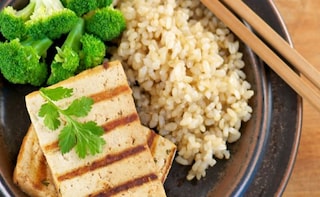Brown rice is often considered the unattractive, less delicious sibling of its preening, pluming sister - white rice. People complain that it is too heavy, too chewy, it doesn't taste good with dal, it takes too much time to cook, it does not have that delectable rice aroma, and so on. A veritable litany of complaints has been built up against it and it has been relegated to that back-burner of the kitchen - the health section. People substitute brown rice for white rice and then grumble heartily and virtuously about the sacrifice they are making for the sake of their burgeoning waistlines.
Meher Mirza is an independent writer and editor, with a focus on food and travel. Formerly with BBC Good Food India, she loves anime, animals and artsy things but also comics, technology and death metal.Disclaimer:
The opinions expressed within this article are the personal opinions of the author. NDTV is not responsible for the accuracy, completeness, suitability, or validity of any information on this article. All information is provided on an as-is basis. The information, facts or opinions appearing in the article do not reflect the views of NDTV and NDTV does not assume any responsibility or liability for the same.
Advertisement
Advertisement
Advertisement
Advertisement
Meher Mirza is an independent writer and editor, with a focus on food and travel. Formerly with BBC Good Food India, she loves anime, animals and artsy things but also comics, technology and death metal.Disclaimer:
The opinions expressed within this article are the personal opinions of the author. NDTV is not responsible for the accuracy, completeness, suitability, or validity of any information on this article. All information is provided on an as-is basis. The information, facts or opinions appearing in the article do not reflect the views of NDTV and NDTV does not assume any responsibility or liability for the same.
For the latest food news, health tips and recipes, like us on Facebook or follow us on Twitter and YouTube.
Advertisement
